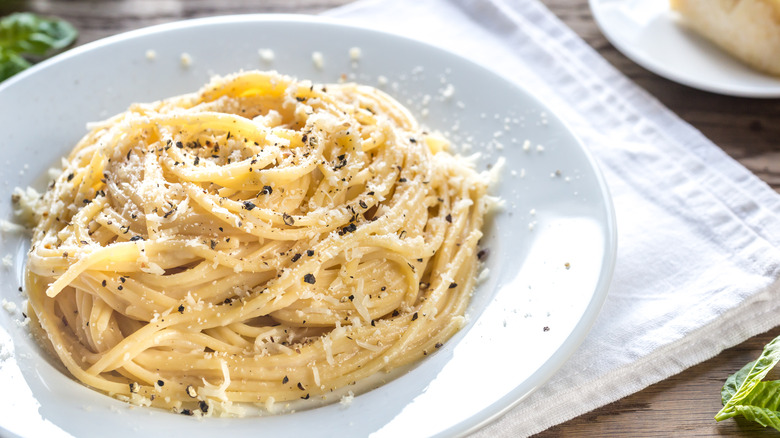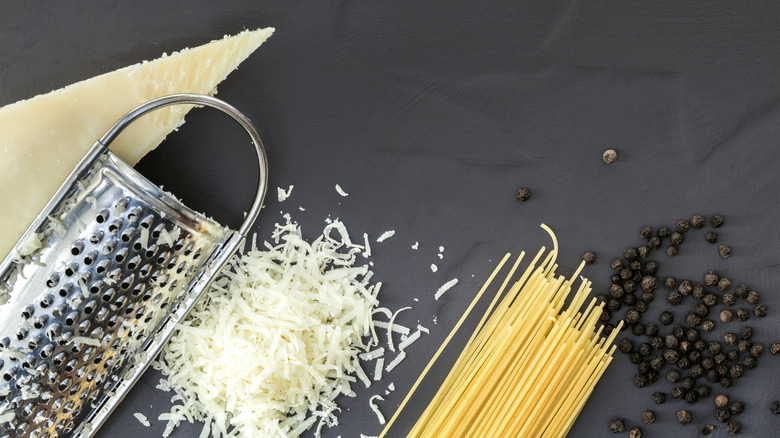The Crucial Reason Cacio E Pepe Should Be Served Immediately
If you ever visit the eternal city of Rome, there are certain things you can't miss. For instance, there is the Colosseum, Vatican City (where you can marvel at the Sistine Chapel), the famous Trevi Fountain, and cacio e pepe. Not a monument or a place at all, cacio e pepe is an Italian pasta dish composed of little more than spaghetti, pecorino Romano cheese, and pepper. When prepared correctly, each strand of al dente spaghetti should be coated in a silky sauce, the result of the cheese being combined perfectly with the hot pasta water, and the dish should have a spicy bite from the pepper. Cacio e pepe is as Roman as the Pantheon; La Cucina Italiana suggests that the dish likely originated in ancient Rome with shepherds.
Shepherds would spend long days and nights herding their flocks and sleeping amongst the animals often in cold temperatures. Their food sacks included ingredients that would sustain them and keep them as comfortable as possible. The dry pecorino cheese (cacio) did not go bad quickly, dried pasta was not perishable and provided plenty of energy-rich carbohydrates, and the spicy pepper kept them warm. After traveling for miles on foot every day, these men and boys probably could not wait to eat their fill when the pasta dish was ready, and as it turns out, they were doing it right by not letting the meal sit around.
Don't hold off on serving this dish once it's ready
Unlike lasagna, which you can remove from the oven and let sit while you set the table, make your salad, and get ready to sit down to eat, a bowl of cacio e pepe should be eaten right away, so you should be sure everyone is ready to respond like soldiers to the dinner bell. With such simple ingredients, cacio e pepe may seem like a breeze to prepare, but it is quite tricky to get just right if you're going for an authentic Roman result. For the desired silky, creamy coating you want for each pasta strand, the BBC says the cheese must be very finely grated and gradually added to the hot pasta water to create the perfect consistency. Like any emulsion, this one, too, will break with time, so once the pasta is added and stirred, it's time to eat. If you wait too long, the cheese will clump, leaving you with undressed noodles and a ball of cheese.
Although numerous pasta shapes can be used, spaghetti is the traditional choice for this dish. Critics may differ on how the pepper is used, but it is an essential ingredient. La Cucinia Italiana suggests a "pepper broth," or freshly cracked peppercorns heated with some pasta water, and the BBC says some chefs will toast the cracked peppercorns in a pan to release more flavor. Any way you make it, trust that the time and effort for authenticity is worth it. As Anthony Bourdain once said, cacio e pepe "could be the greatest thing in the history of the world."

